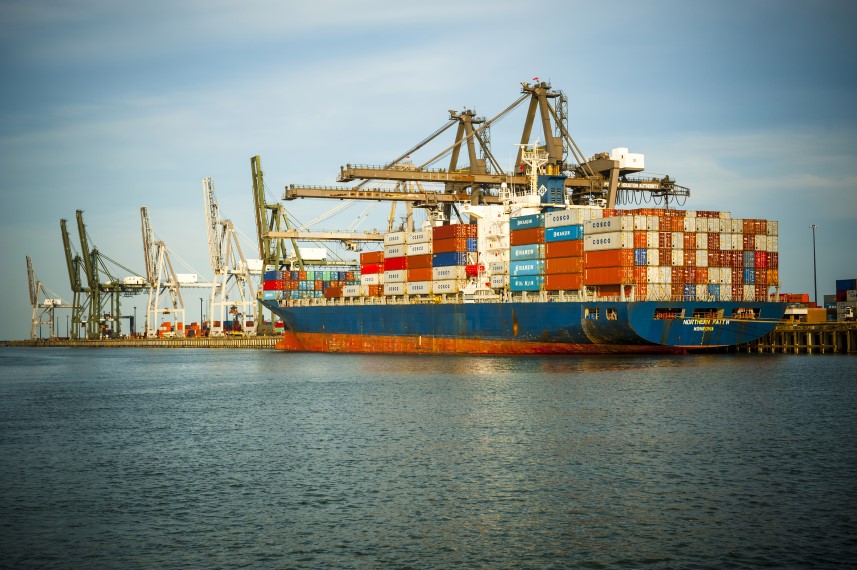Countering COVID-19 Disruptions with Supply Chain Resiliency
Published Mar 28, 2020 by Maggie Martin
The COVID-19 pandemic continues to disrupt many aspects of Houston's business community, including jobs and how businesses engage their customers. The crisis is also creating problems for the global supply chain. But experts say there are actions companies can take now to strengthen that chain and make it even more resilient in the long term.
Margaret Kidd is Program Director for Supply Chain & Logistics Technology at the University of Houston's College of Technology. She offered insight for businesses below.
What does a resilient supply chain look like?
A resilient supply chain is one that:
- conducts a risk management review at regular intervals
- has a business continuity/contingency plan
- has tested that plan at regular intervals
A true resilient supply chain has factored in the cost of JIT (just-in-time) versus flexibility and has high visibility. Examples of flexibility include geographic location of first and second tier suppliers, as well as location of manufacturing facilities and distribution centers, along with modes of transportation for delivery.
While vetting of suppliers for quality, performance, and timely readiness are important, establishing purchasing procedures that provide proper incentives to vendors are also relevant to resiliency. Often, these are made with strict terms and conditions in the purchase order or manufacturing/service agreements.
Ultimately, seeking partnerships with suppliers is the key to success. In the global disruption of the supply chain and various declarations of force majeure, relationships for the long term can help mitigate risk when literally the entire global community faces similar challenges.
What are the immediate actions business leaders must take now with regards to supply chain management to stay in operation?
If we consider Houston industrial companies, all should have been following the news from China as of early-January, Europe as of mid-February and the U.S. as of late-February/early-March. These companies should have already implemented a business continuity/continuation plan as a result of following the data points and established a central command unit.
In many cases in the current environment, it is both availability of personnel and mode of transportation or routing that must be reconsidered, along with using second-tier/or other suppliers. If alternative geographic locations for manufacturing exist, those should have been activated before March. When there is no internal expertise on the logistics side, a best practice is to consider a 3PL/4PL provider.
Business leaders must have a firm grasp of delivery deadlines so that supplies reach the front line and get to market. To achieve these goals, companies need to thoroughly evaluate the suitable modes of transportation. On some trade lanes, reliable liner service will be impacted with "blank sailings" or insufficient containers given imbalance. On other trade lanes, given delays in capacity of air cargo, it actually might make more sense to utilize a quick liner service. The granularity of schedule, price, and reliability are key factors to analyze in supply chain management.
What are the greatest challenges in the short-term? Long-term?
One of the greatest challenges in the near term relate to sole source suppliers and disrupted maritime transport coming from Asia. In the long term, organizations engaged in manufacturing must diversify their facilities geographically and have multiple suppliers in various regions. Additionally, buffer stock during periods of known natural disasters such as hurricane season and Q4 retail/holiday season should be considered.
Reliable partners in logistics vendors are established on a long term basis with volume commitments. It is truly a challenge for global container carriers to serve all markets everywhere. Relationships with niche regional players are critical for timely delivery.
What’s the timeline for decisions they must make within the next 1-2 weeks? A month? 6 months? A year?
Regrettably, managing supply chain disruptions can impact both market share and stock price for many publicly traded companies. A high performing supply chain will use disruption as a competitive advantage. If organization leaders can alter the product or shape demand, then production can continue. A stellar supply chain leader will analyze risk through multiple lenses and most saliently through global connectivity.
Disaster recovery will probably be occurring by mid-May/early-June for Houston (if we use China as our illustration). The advantage our region has for probably a quicker recovery relates to our decades-old urban planning dilemma - lack of population density and public transport, along with sprawl. We do not have the same compounding risk factors of China, Italy or, New York City.
For organizations that did not have a fine-tuned business continuity plan, the next six months will be the time to get one in place and test and optimize their supply chain through JIT and flexibility.
Which resources should they leverage most to make those sound decisions?
The resources that should be leveraged are the subject matter experts within the organization. This translates into companies leveraging the human capital in both risk management and business continuity capacity, as well as bringing in consultants/3PL/4PL service advisors.
In Houston, industrial companies regularly employ companies such as Agility, Bollore, Ceva, Crane Worldwide, DHL, Kuehne & Nagel, and UTC Overseas, respectively.
The Partnership highlighted 12 key indicators on COVID-19's impact on Houston.
Visit the Partnership's COVID-19 Resource page for updates, guidance for employers and more information. And sign up for daily email alerts from the Partnership as the situation develops.
 The Houston Report
The Houston Report



















